Caesarean section births rise in rural India. 84% deliveries in West Bengal’s private rural facilities are C-sec, the highest in India
The WHO says up to 10-15% Caesarean section births are acceptable. However, between 2015-16 and 2019-20, rural India registered a rise in Caesarean section births in public and private healthcare facilities. Telangana tops the list with over 58% rural births in the state as C-sec deliveries.

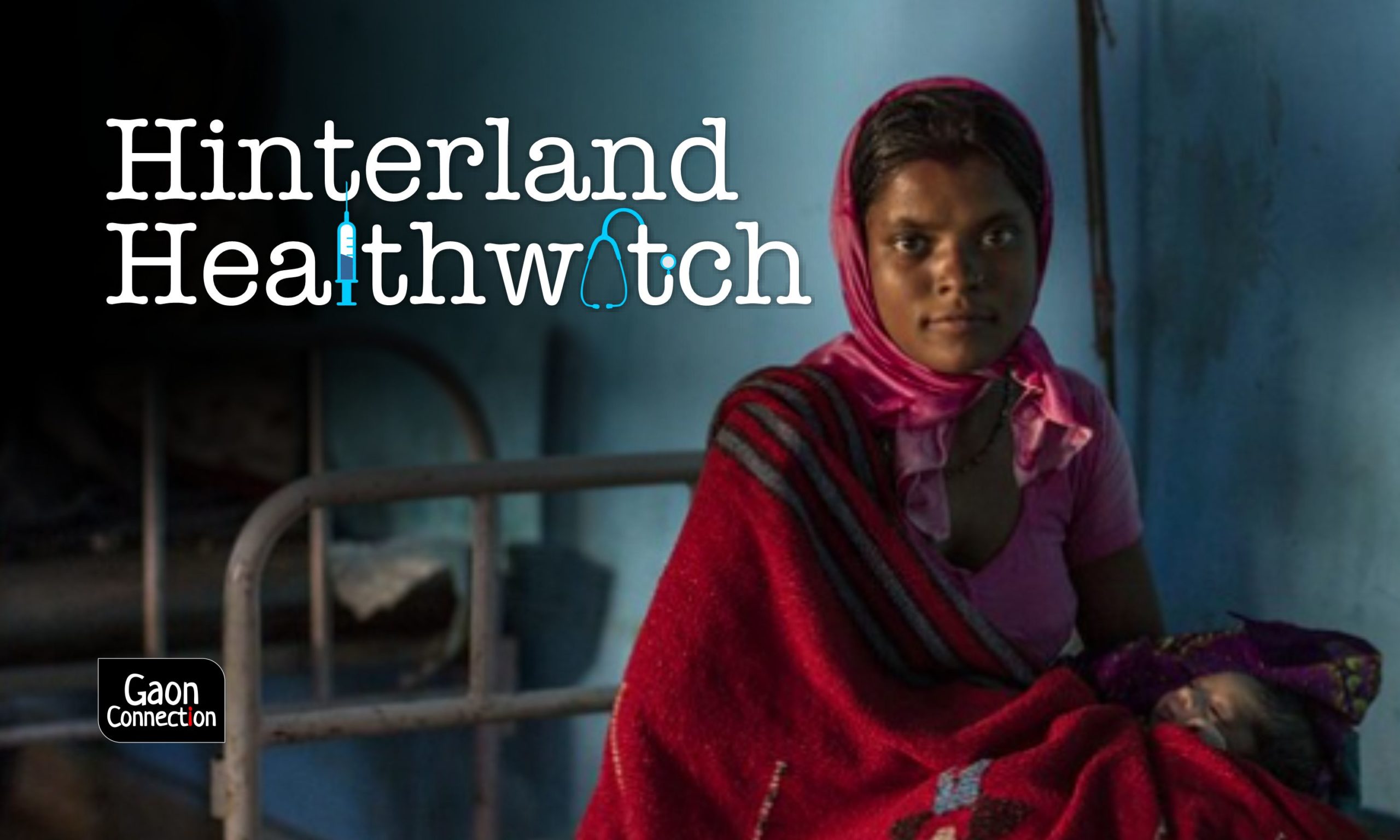
Photo: Unicef India/flickr
Rural India’s much awaited report card on its healthcare sector is out. And the National Family Health Survey-5 (2019-20) of the Union ministry of health and family welfare shows an increase in the number of Caesarean births in rural India. And this rise has been registered in both public and private healthcare facilities.
Telangana tops the list with 58.4 per cent rural births in the state as Caesarean section (C-sec) deliveries. This is followed by Goa where every fourth baby born in its rural areas is through a C-sec delivery. From 27.7 per cent in 2015-16, C-sec rates in rural Goa (private and public health facilities) jumped to 40.1 per cent in 2019-20.
All states in India, except Mizoram, have shown a rise in C-sec births in rural areas in the last five years.
C-sec births in public and private facilities in rural Jammu & Kashmir have jumped from 26.9 per cent in 2015-16 to 37.8 per cent in 2019-20. In the same time period, such deliveries have increased from 17.1 per cent to 26.9 per cent in rural areas of Sikkim; and 18.9 per cent to 28.6 per cent in rural West Bengal.
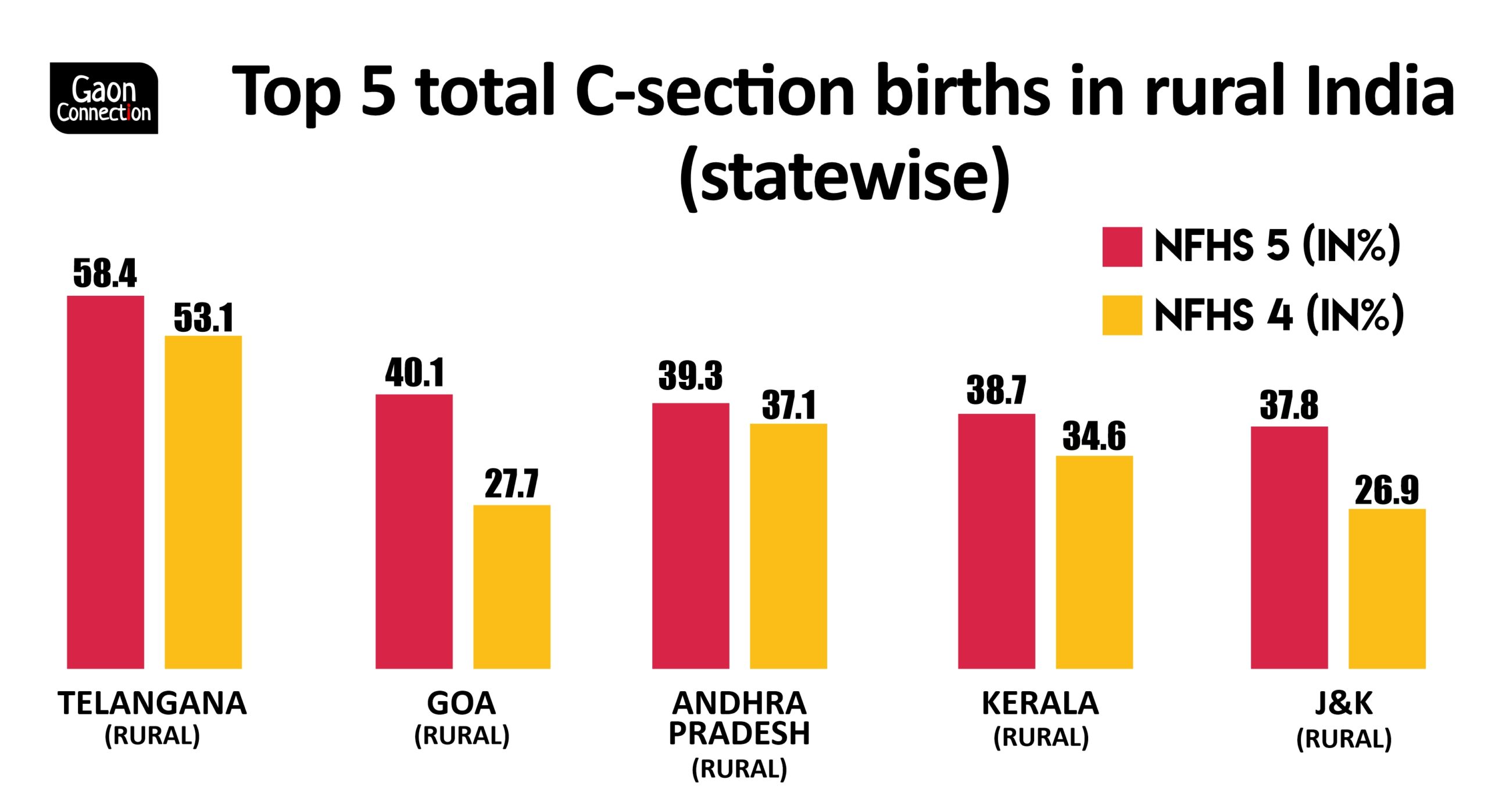
The NFHS-5 also provides facility-wise data — for public and private healthcare facilities. Shockingly, 84.4 per cent births in private facilities in rural West Bengal are C-sec births, the highest in the country. Telangana is not very far at 80.6 per cent.
Since 1985, the international healthcare community has considered the ideal rate for Caesarean sections to be between 10 per cent and 15 per cent, says the World Health Organization (WHO). “When medically justified, a Caesarean section can effectively prevent maternal and perinatal mortality and morbidity. However, there is no evidence showing the benefits of Caesarean delivery for women or infants who do not require the procedure. As with any surgery, Caesarean sections are associated with short- and long-term risk which can extend many years beyond the current delivery and affect the health of the woman, her child, and future pregnancies,” the WHO warns.
As per the NFHS-5, only four Indian states have a C-sec rate below 15 per cent in rural areas — Nagaland (3.6 per cent), Mizoram (4.8 per cent), Meghalaya (6.1 per cent) and Bihar (8.8 per cent). In Gujarat and Assam, the rate is 15.3 per cent and 15.6 per cent, respectively.

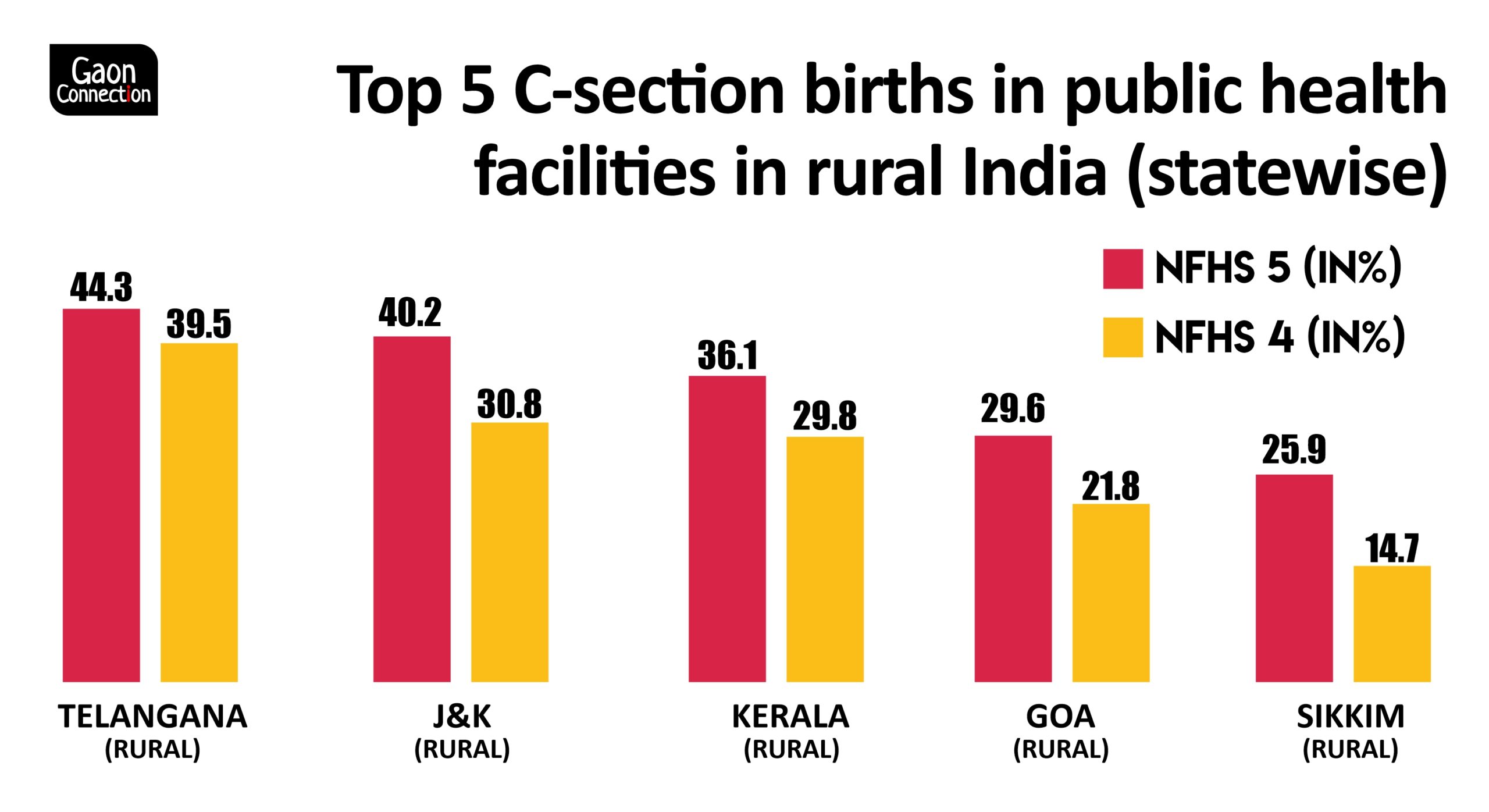
Health experts suggested monetary benefit for doctors as the major reason behind increasing C-sec births in villages, but “other reasons could include severe anaemia, which is rampant among rural women. This, coupled with late registration of pregnancy and poor access to antenatal care services, often puts them under the category of high-risk pregnancy, which may eventually increase the chances of complications, leading to the need for a Caesarean section. Healthier women with proper and timely pregnancy care can help control rising numbers of C-sections in rural areas,” Chhaya Pachauli, member of Jan Swasthya Abhiyan, Rajasthan, told Gaon Connection.
Pachauli said the reasons behind such high percentages in C-sections, however, needs to be researched more, as “there could be diverse factors driving the high rates of C-sections among different groups of women, as even states that have better health indicators and public health infrastructure, such as Kerala, have reported higher C-sections”.
Between NFHS-4 and NFHS-5, C-sec births in private healthcare facilities in rural Kerala have increased from 38.1 per cent to 40.4 per cent. In the same time period, Caesarean deliveries in its public healthcare facilities in rural areas have jumped from 29.8 per cent to 36.1 per cent.
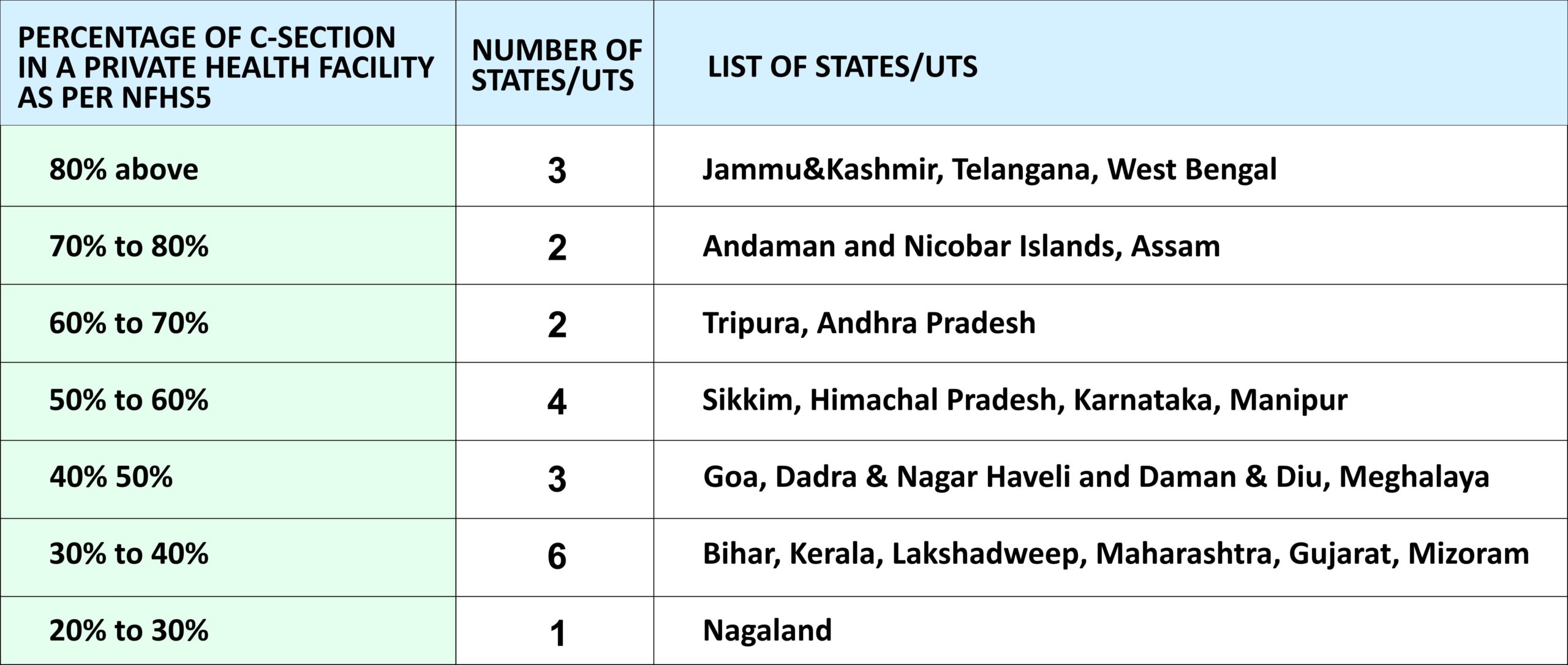
Rising C-sec deliveries
C-sec delivery is often performed because vaginal delivery would put the baby or mother at risk. Health experts cite multiple reasons for the rise in C-sec deliveries in rural India. These include patient intolerance, increasing age of marriage and late conception.
“People marry late. And even after marriage, a couple does not want to conceive soon. With age, medical complications related to blood pressure, diabetes, cholesterol and thyroid increase. And then, doctors have no other choice but to perform C-sections,” Soumitra Kumar, a gynaecologist based in Kolkata, West Bengal, told Gaon Connection.
According to Shashi Yadav, president of ASHA Karyakarta Sangh, Patna, Bihar, “Most doctors in government hospitals in rural areas have their own clinics where Caesareans can be performed. Sometimes, they fake complications, and recommend Caesarean delivery to make extra money.”
It is also a fact that most rural government hospitals do not have necessary infrastructure or human resources to manage complicated deliveries, said Pachauli. “Most of these rural hospitals lack trained staff or obstetricians and face a dearth of necessary equipment and supplies necessary to manage critical cases, which may require Caesarean deliveries. This is also why women are often referred to nearby private hospitals or higher public health facilities that could be far away,” she added.
There are other reasons as well. “Earlier, women had higher pain tolerance levels. They would do a lot of household chores, which meant more exercise during pregnancy, and this helped in a normal delivery,” Yadav, who is associated with the ASHA Karyakarta Sangh for the past 13 years, told Gaon Connection. According to her, medical complications have also increased in women leading to a rise in C-sec deliveries.
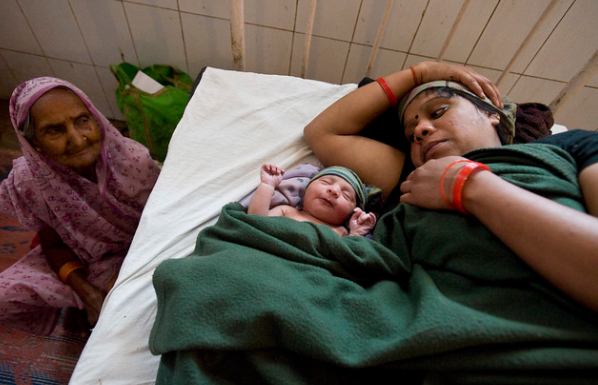
Meanwhile, the Indian government has also been stressing on institutional deliveries (as against home births) to reduce maternal and neonatal mortality. Under the Janani Suraksha Yojana, launched in April, 2005 as part of the National Rural Health Mission, if a pregnant woman undergoes delivery in a public health facility, she is provided with cash assistance. For a rural public health facility, Rs 1,400 and Rs 700 are given to beneficiaries in low- and high-performing states, respectively. In an urban health facility, this goes up to Rs 1,000 and Rs 600.
“With the help of ASHAs, institutional deliveries have increased in villages. This has helped decrease maternal and neonatal mortality. But this has also resulted in an increase in Caesarean deliveries, even when there are only minor complications. People do not want to take any risk,” claimed Yadav.
C-sec deliveries also burn a hole in the pockets of rural residents. “There is no expenditure for a vaginal or C-section delivery for a normal bed in a government hospital. In a private health facility, the average out-of-pocket expenditure for C-section varies between sixty thousand to one lakh forty thousand rupees,” said Kumar.
The NFHS-5 also shows average out-of-pocket expenditure per delivery in a public health facility is between Rs 600 and Rs 15,000 across states and union territories in the country. Although the cost varies with respect to the healthcare facility, it is usually high in private facilities.
While the Caesarean section deliveries rise in both rural and urban India, it is important to note what the WHO has to say on C-sec births. When C-section rates rise towards 10 per cent of the total deliveries, the number of maternal and neonatal mortality will decrease. However, when the rate goes above 10 per cent, there is no evidence that mortality rates will improve.
Should it then not be a matter of huge concern that in private healthcare facilities in rural areas of West Bengal and Telangana, over 84 per cent and 80 per cent births are C-sec deliveries?

